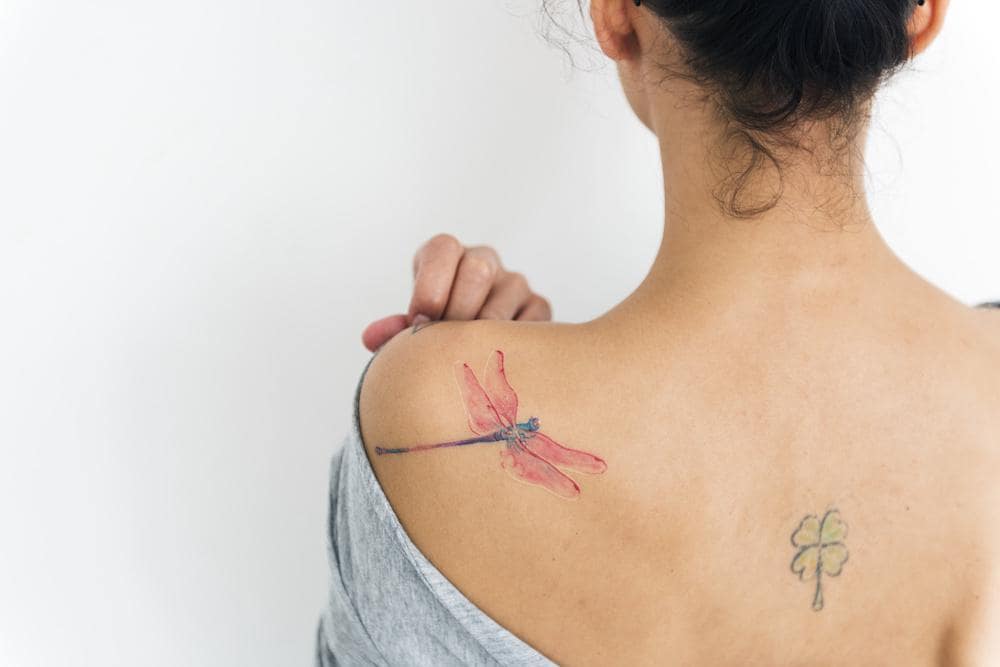Are you concerned about the long-term implications of having tattoos? Do you want to know if tattoo removal leaves scars? In this article, we will answer these questions and more. We will discuss the advantages of tattoo removal and the possible side effects of the procedure. Ultimately, we will give you a comprehensive overview of laser tattoo removal so that you can make an informed decision about whether or not to have your tattoos removed. Stay tuned!
How does laser tattoo removal work?
Laser tattoo removal is a popular treatment option for people who want to remove their tattoos. It uses a laser that targets the ink and removes it with minimal damage or scars.
Several different lasers are used in laser tattoo removal, but they all operate similarly. The laser breaks down the color pigments in the tattoo into smaller pieces, which then can be eliminated through skin cells’ natural processes.
Although some small risks are associated with laser tattoo removal (such as temporary redness, swelling, and pain), these side effects typically disappear within a few days after treatment. In most cases, treatments take about an hour to complete and usually require no downtime.
So why choose laser tattoo removal over other options? Laser tattoo removal has many advantages:
- it’s noninvasive;
- there is little risk of scarring;
- treatments can be completed on an outpatient basis;
- there’s usually minimal discomfort afterward.
Plus, unlike other methods that may only work well on certain types of tattoos (chemical peels) or specific body areas (surgery), laser tattoo removal can effectively remove nearly any type of ink from anywhere on your body.
How painful is laser removal tattoo?
One of the most common laser removal treatments is tattoo removal. This procedure uses a short-pulse light to destroy the tattoo pigment and remove it from your skin. Laser removal can be relatively painless, depending on the severity of your tattoo. However, it is possible to experience some temporary side effects after treatment, such as redness, swelling, itchiness, or discomfort. In rare cases, there may be permanent damage to the surrounding skin tissue due to heat trauma caused by the laser beam. If you are concerned about any potential risks associated with this treatment, make sure to speak with your doctor before a tattoo removal.
The pain from laser removal tattoo is usually mild but can vary depending on the location and duration of the treatment. Many people report feeling a tingling or burning sensation as the laser destroys the tattoos. Some people experience immediate relief after treatment, while others may feel discomfort for a few days afterward. In either case, there are various ways to relieve this pain (such as applying cold packs or over-the-counter analgesics).
Does laser tattoo removal leave scars?
There is a lot of misinformation online about scars after tattoo removal. Some believe the treatment leaves permanent scars, while others think it’s safe and harmless. In reality, most people who have laser tattoo removal experience minimal scarring. But there are a few rare cases where patients do experience more significant scarring.
The primary method used for laser tattoo removal uses an intense light that passes through the skin and destroys the ink pigment cells below the layer of the epidermis (the top layer of skin). This process results in minor to moderate scarring because blood vessels near the treated area may also be damaged.
On the other hand, if you experience excessive scarring or pain during healing, please consult your doctor immediately, as these conditions could indicate deeper issues such as infection or worse.
Do tattoo removal scars go away?
Tattoos removal scars can take a long time to disappear. The damage inflicted by the tattoo ink and the rolling, tugging, and stretching of the skin during the tattoo removal process can leave permanent marks that are difficult to conceal. At the same time, with proper care and self-imposed patience, many find that their tattoo removal scars eventually fade away.
Here are some tips for improving your chances of successful scar reduction:
- Choose a reputable laser or tattoo removal clinic with a high success rate. This will help you avoid unnecessary pain and aggravation during the treatment process.
- Follow all instructions carefully from your provider. Failure to do so could lead to more injuries and, ultimately, more scars.
- Maintain regular checkups with your medical professional while continuing treatment on your tattoo removal scars to monitor any changes over time.
How to get rid of tattoo removal scars?
Some get tattoo removal because they want a new look without the hassle of old, faded tattoos. Nevertheless, this sometimes goes differently than planned. After getting their tattoo removed, many people find their skin too tight and sensitive for normal skin care products to work well. This means that scarring can occur from the tattoo removal process – even if you have good results.
There are several ways to prevent or reduce scarring from tattoo removal:
- Follow your doctor’s instructions carefully. Ensure that your procedure provider uses the right strength of laser light and avoids applying pressure when removing the ink.
- Use moisturizers regularly after your treatment to help keep your skin hydrated and protect it against infection. Apply sunscreen every day while outdoors in bright sunlight during the summer months as well.
- Follow up with a qualified aesthetician who can recommend specific treatments (including topical ointments) explicitly designed for post-tattoo healing scars.
How long does scarring after tattoo removal take to heal?
It can take anywhere from a few days to several weeks for the scarring to completely heal. The most important thing you can do is keep the area clean and dry so that the skin doesn’t get too thick or callous-like. You should also avoid touching or rubbing the area excessively, which could cause further irritation. Contact your doctor immediately if you experience any pain, swelling, redness, or itchiness during the healing process.

